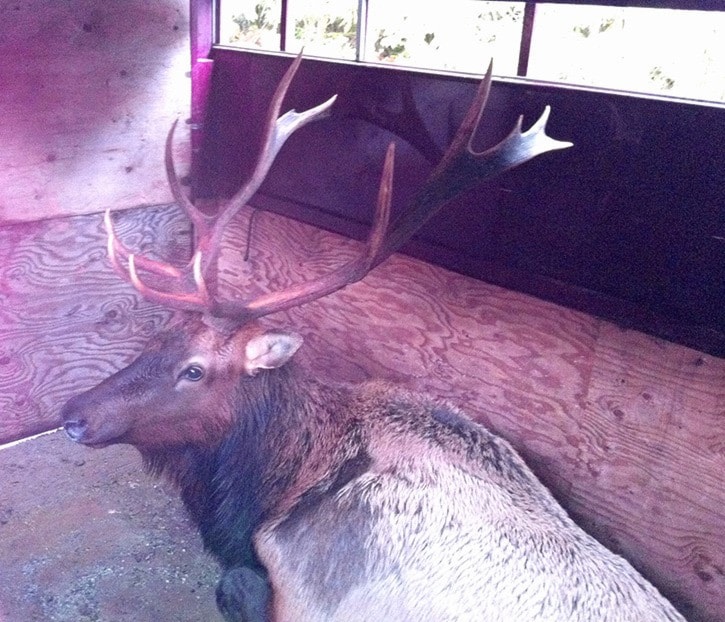Elk have been reintroduced to the forests surrounding Harrison Lake, thanks to a collaborative project between the Sts'ailes band and the Ministry of Fish and Wildlife.
There are now 60 elk living in the region, said Kelsey Charlie, and their numbers are expected to grow steadily. Chelsey, a Sts'ailes council member, has been working with the province for several years on reintroducing the elk to this area. While there have been several releases recently, about two dozen more elk were brought here from Sechelt on Sunday.
"It was quite the day," Charlie said, noting the significance of the release. "My dad is 75 and it must have been at least 60 years plus since there was elk harvested here."
Not that hunting of the elk will be happening in the near future, he pointed out.
While historically, elk hunting was quite popular in the area, it will take at least five to 10 years of studying the reintroduced elk before any harvesting regulations will be decided. At one point, it's estimated that there were more one million of the mammals across North America. However, overhunting led to dwindling numbers, Charlie said. A transplanting project began in the 1980s on the Sechelt peninsula, but because they breed and multiply so quickly, the elk outgrew that area.
The current project in the Harrison area goes back about 10 years already, Charlie said.
"We've talked about harvesting plans and all these different things," he said. "We're taking more of a proactive approach rather than reactive one, doing a lot of collaborating, and that includes the harvesting. But right now it's everyone's responsibility to look after them," he said.
With elk being a traditional meat for local First Nations, it will be a significant return eventually. Elk meat is used for potlatch meals, for example, and it would be preferable to hunt local animals.
"But we're not even thinking that way right now," Charlie underlined. "We're only thinking of getting them solid."
It's been quite a process to relocate the large animals. Once trapped in Sechelt, the elks would be moved (sometimes by barge) by the next day with the help of one of the province's senior biologists, Darryl Reynolds.
"I would get a call at 10 p.m. at night and then hustle around and make arrangements for the next morning," Charlie said. Forty of the elk have been relocated closer to the Sts'ailes area, and 20 were brought up the river by barge to Port Douglas.
"It's been a long process," Charlie said. "It's been 10 plus years of working on this and it's been a very collaborative process. The whole community has been bubbling with excitement, and everyone is taking this with the highest regard."
news@ahobserver.com
